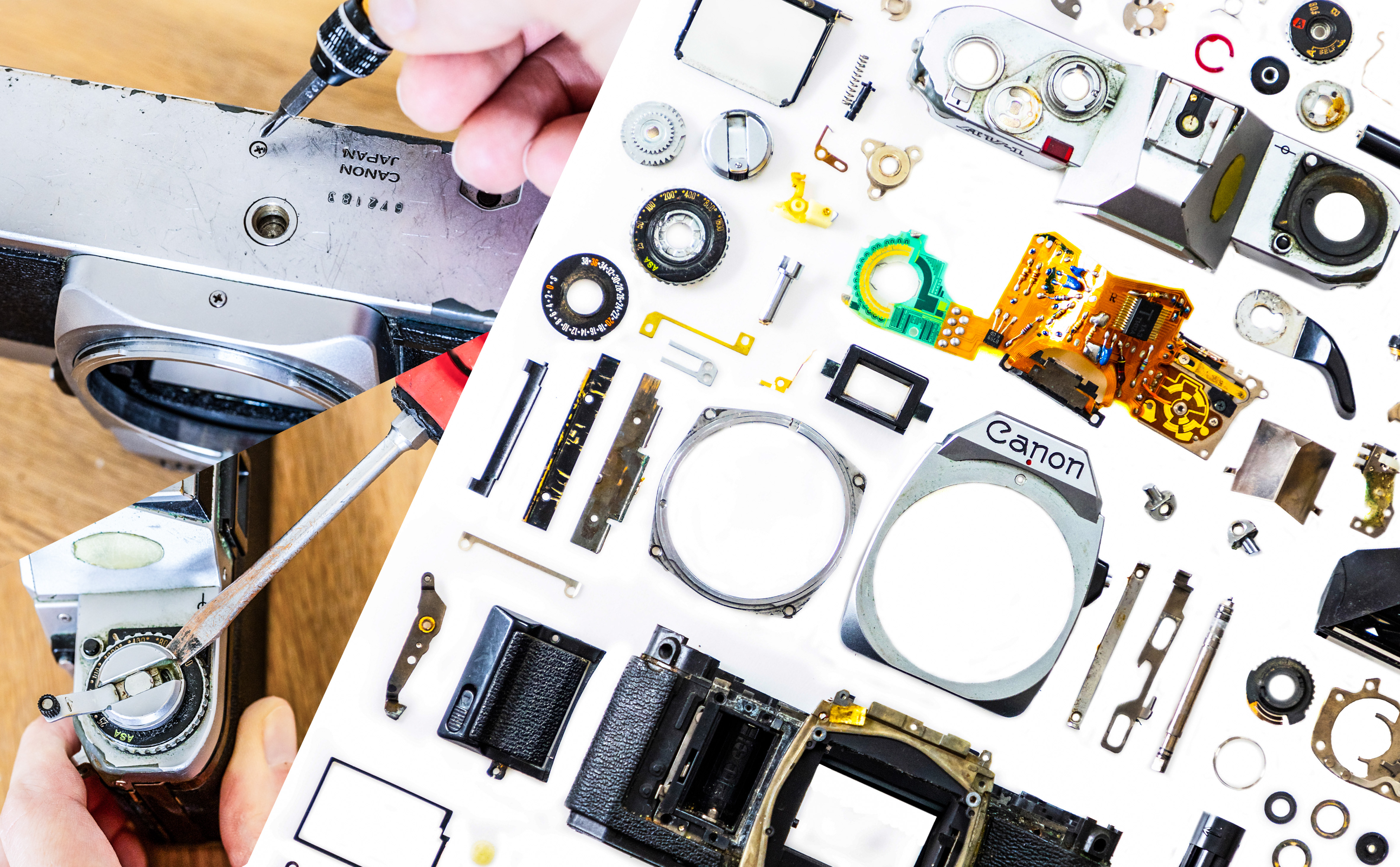The best NAS drive in 2025: store ALL your data, and access it from anywhere
Get lots of storage space, which you can access at home and away, with the best NAS drives available today
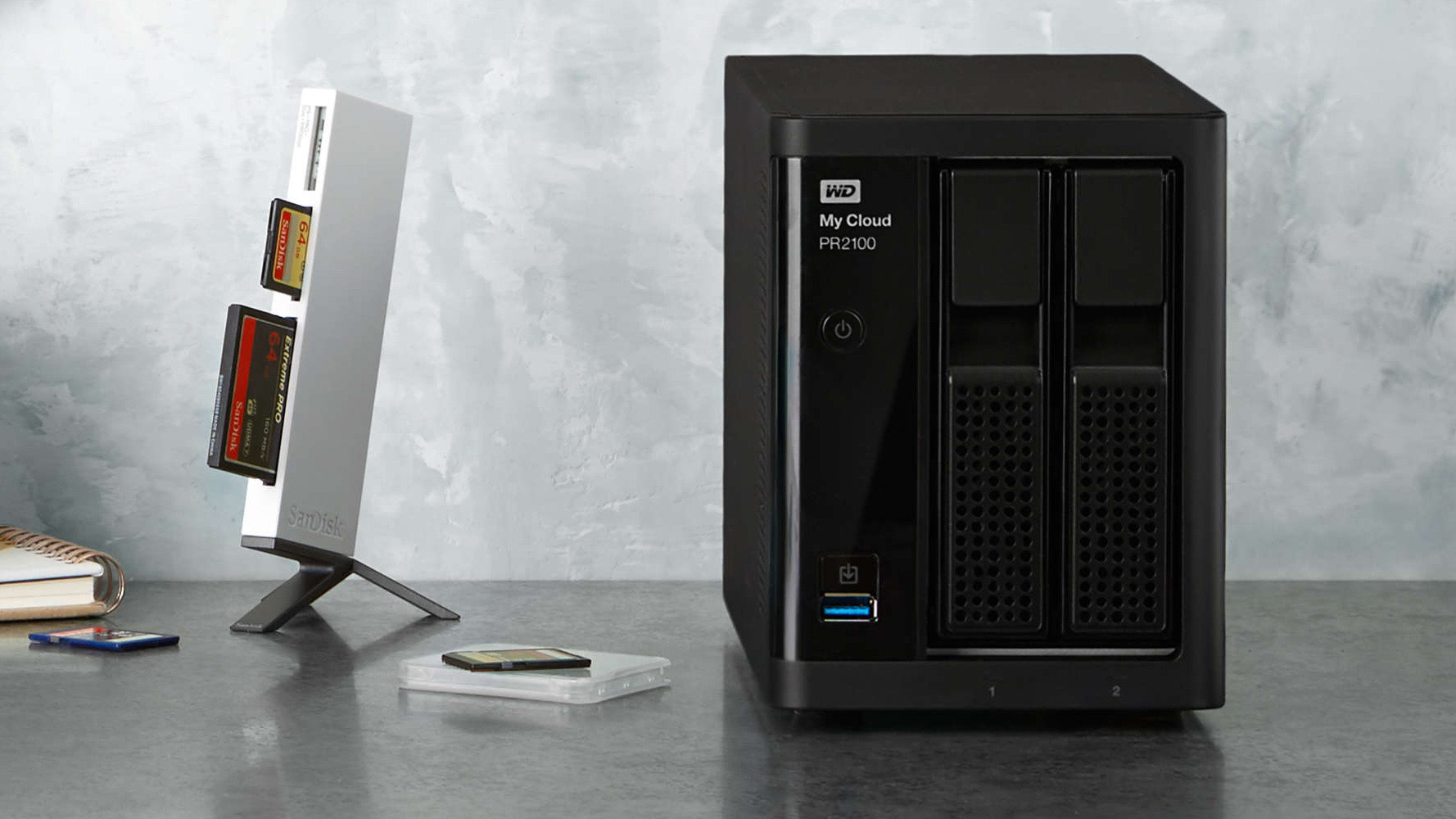
Want help finding the best NAS drive? This guide will help you choose the right one, and show you the best prices.
Short for 'network attached storage', a NAS drive allows your entire photo and video collection to be stored in one physical location in your home or studio, just like a conventional external hard drive. But because this drive also has a network connection, it can linked via your internet router to your home network and the web. NAS drives are also loaded with a simple computer operating system, allowing you to browse their file contents, view photos and videos, all from a remote location.
One thing to note is that NAS drives are often sold without actual hard disks inside. The idea is you fit your own so you can choose the right amount of storage space to suit your needs and budget. In this case, we recommend spending a bit more on heavy duty hard drives specifically targeted at NAS storage, such as Seagate's IronWolf range and WD's Red drives.
Our top picks
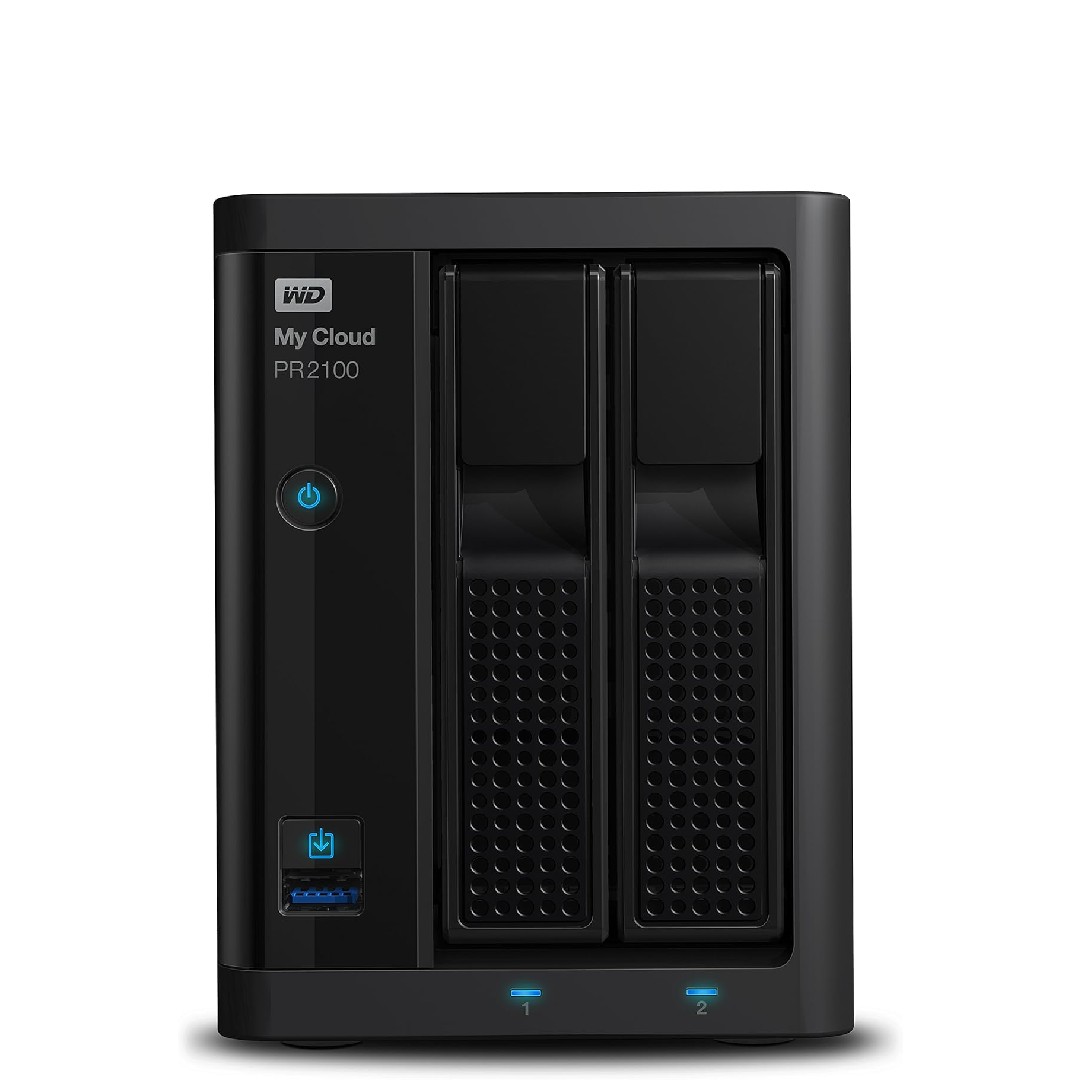
Tailored for creative professionals and small teams managing large volumes of data, this is our top pick overall. Supporting up to 28TB of storage across two bays, its tool-less, tray-less design allows for quick and easy drive installation or replacement.
Read more below
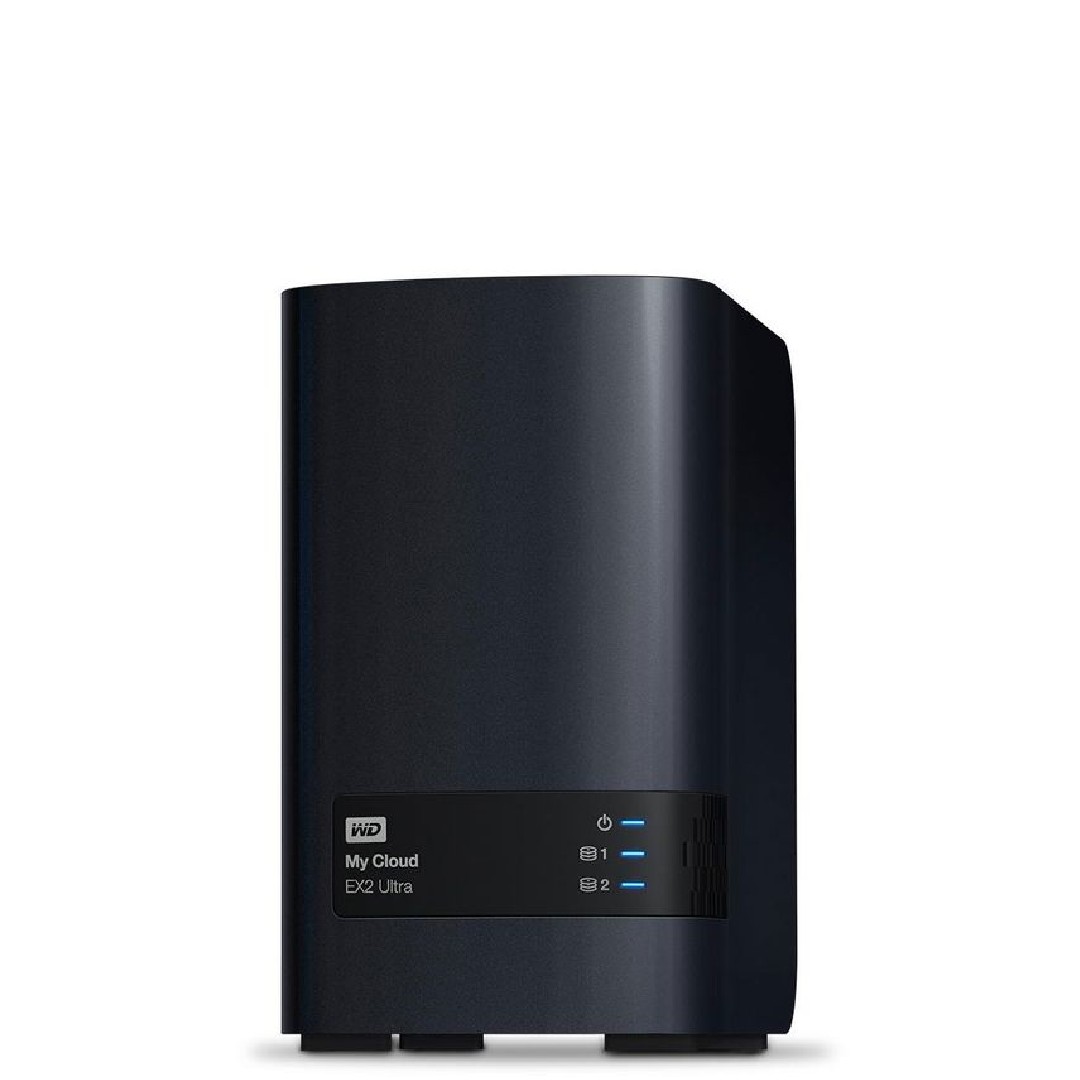
Some NAS drives can be intimidating to beginners, filled with advanced features you'll likely never need. The beauty of this device is how easy it is to set up and use, with no confusing initial settings.
Read more below
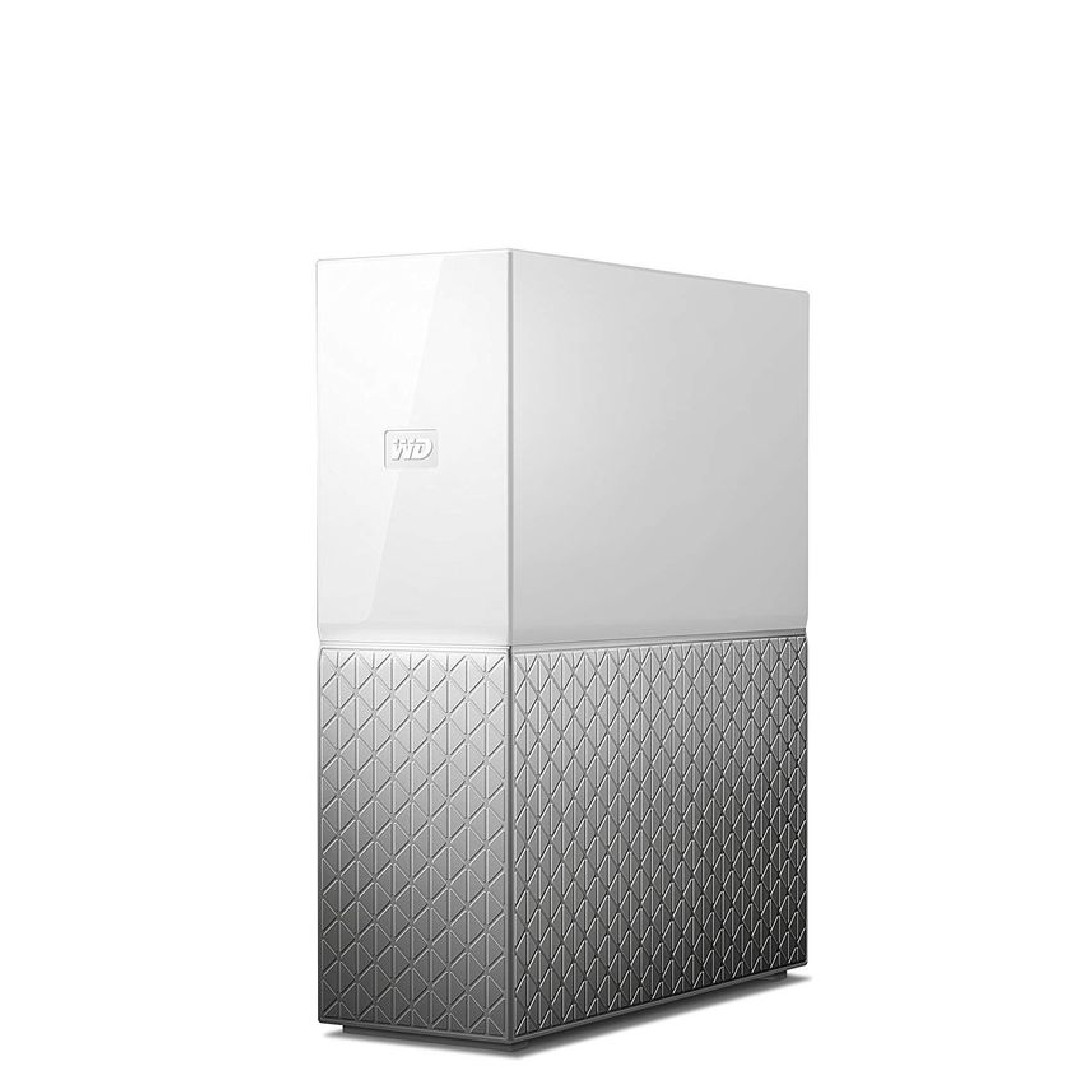
WD has realized that NAS storage certainly doesn't have to be a gadget for geeks and computer tech guys, as the My Cloud Home is as effortlessly easy to get up and running as you could wish for. Just link it to your Wi-Fi.
Read more below
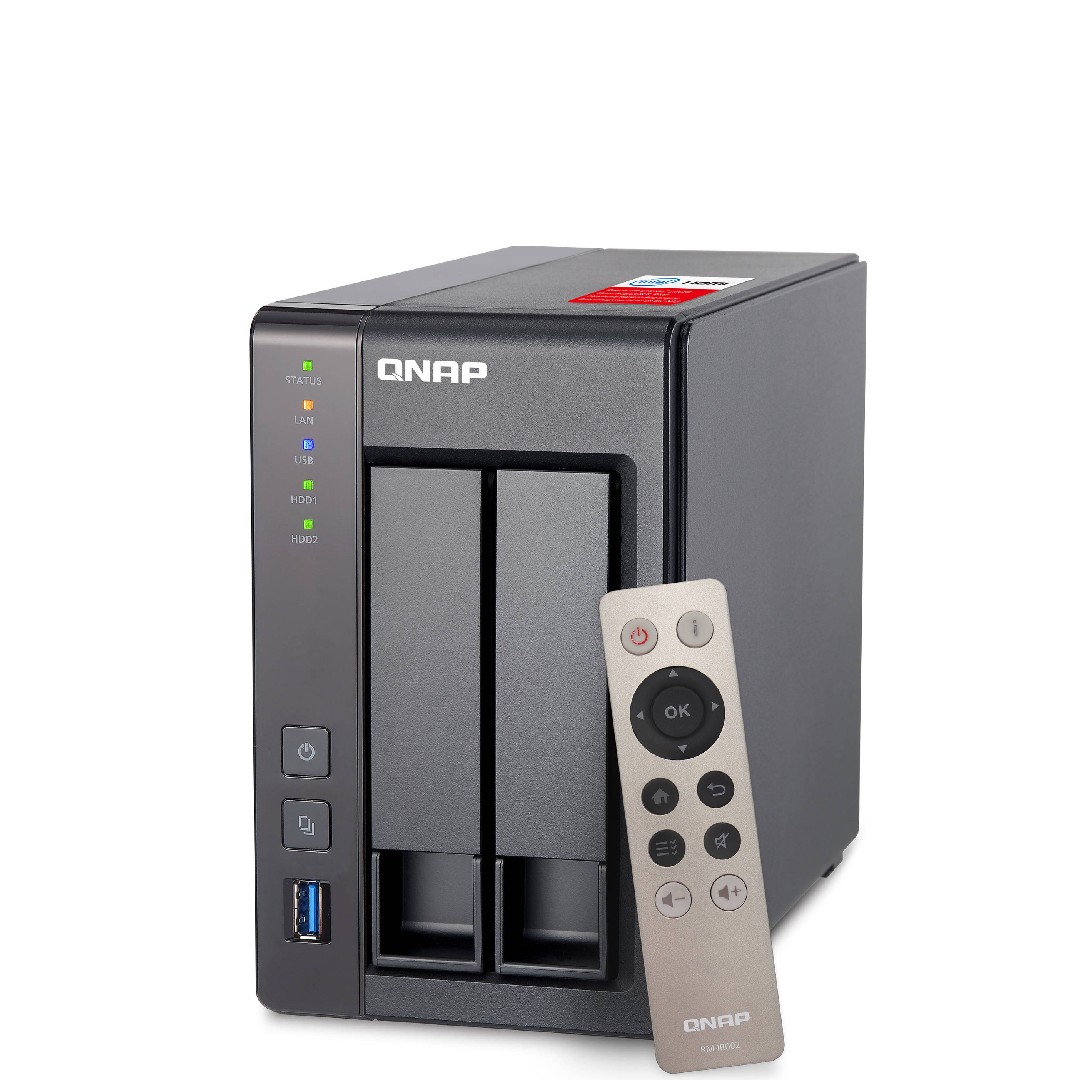
If you’re after a feature-rich NAS storage solution, this is a great investment. It comes with two drive bays to allow you to use dual hard drives in a RAID array of your choice, and there’s loads of apps available to make use of its features.
Read more below
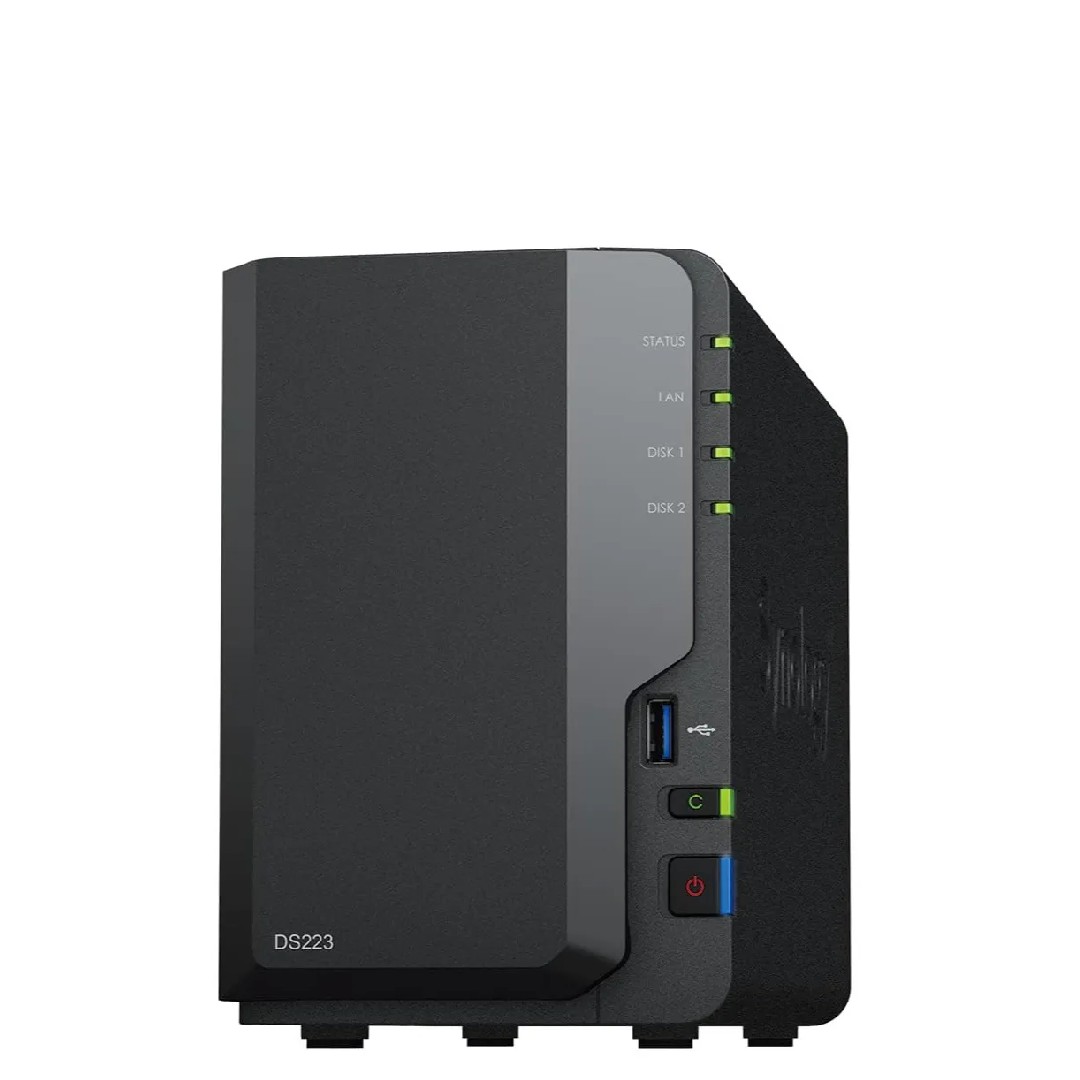
Synology has a reputation for producing pro-level NAS devices, but the DiskStation DS223 is a much more accessible option for amateur photographers. It lets you automatically upload photos and videos you take straight to the DiskStation.
Read more below
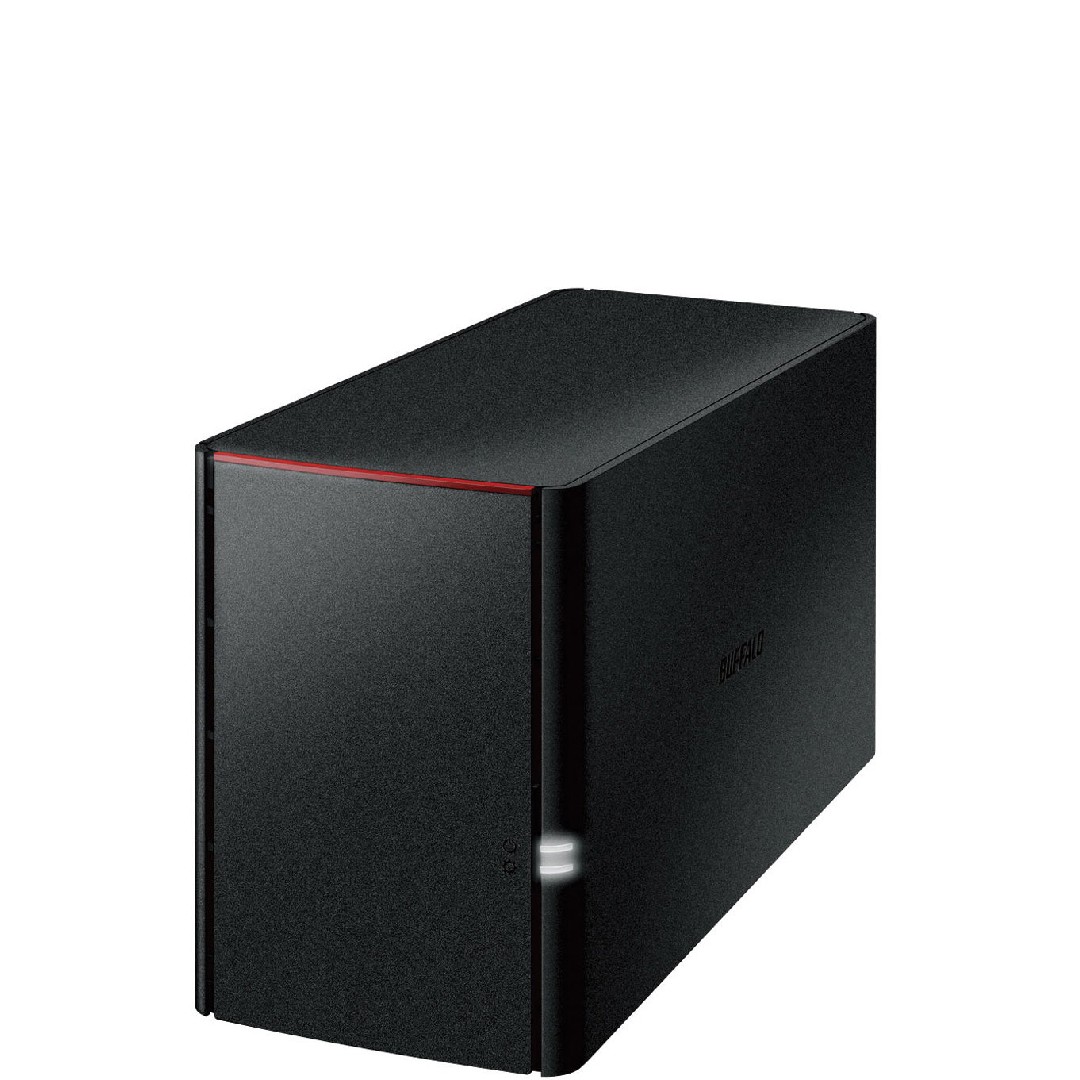
The Buffalo LinkStation LS220D has two drives, with options for RAID drive mirroring, giving you extra data security in the unlikely event of hard disk failure. It also offers easy automatic backup for PCs and Apple Time Machine compatibility, and the drive is DLNA Certified.
Read more below
The best NAS drives
Why you can trust Digital Camera World
Best NAS drive for most people
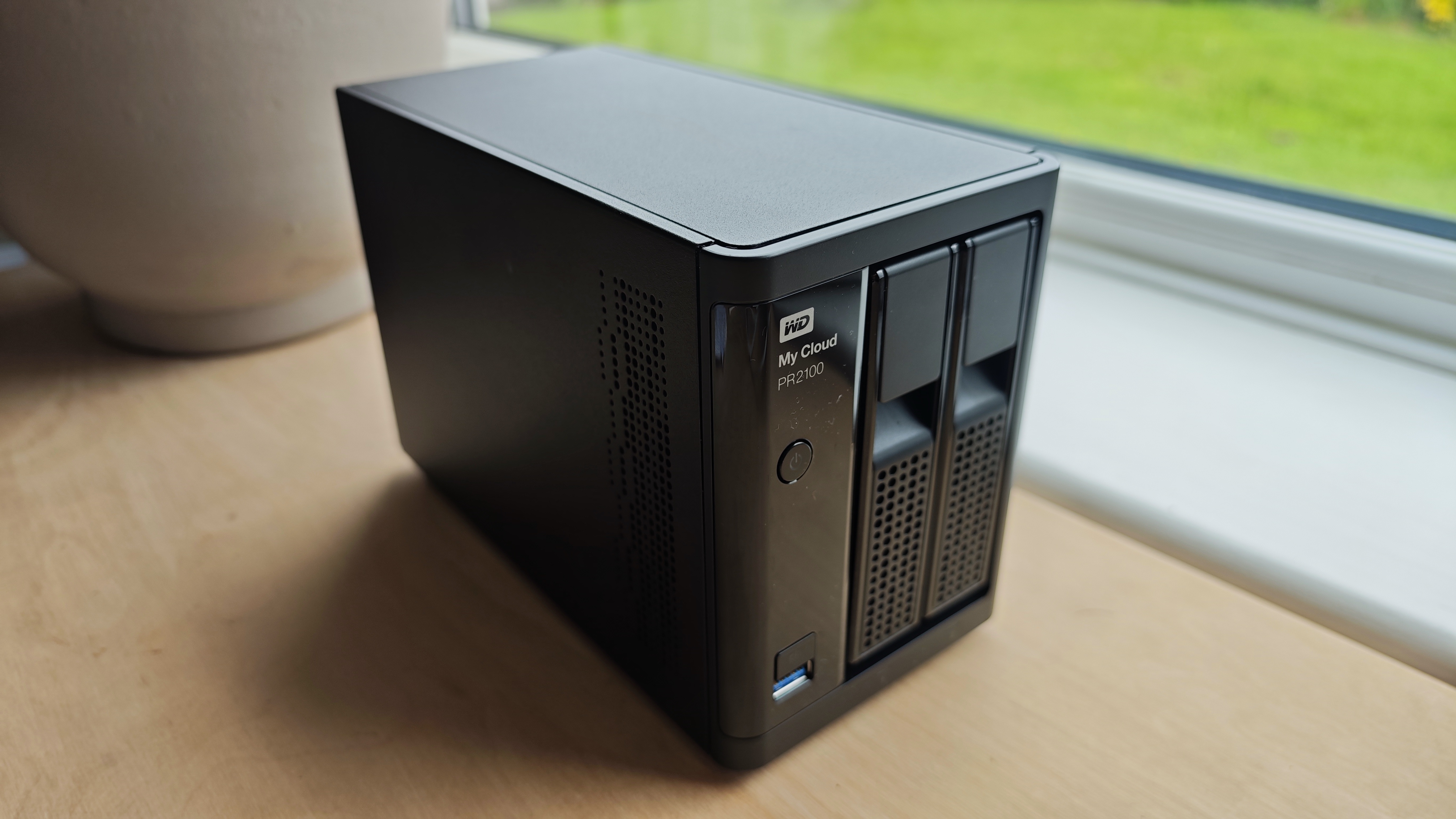
Specifications
Reasons to buy
Reasons to avoid
Here's our top pick overall. Tailored for creative professionals and small teams managing large volumes of data, it offers centralized backup with remote access, making it ideal for individuals or teams working across locations. Supporting up to 28TB of storage across two bays, the PR2100’s tool-less, tray-less design allows for quick and easy drive installation or replacement.
Setup is remarkably simple, thanks to WD’s intuitive setup wizard, which walks users through configuration with ease. The device’s compatibility with both Windows and macOS ensures flexibility for mixed-platform environments, while RAID capabilities provide data redundancy for added security. One-touch copying functionality makes it effortless to back up files directly from external devices, while exFAT compatibility streamlines integration with cameras and external drives.
Powered by an Intel Pentium N3710 quad-core processor and 4GB of RAM, the PR2100 handles most tasks reliably, though its file transfer speeds are average. Its compact, sandblasted metal case is durable and professional-looking, with illuminated status indicators for easy monitoring. Though the quick-release drive mechanism feels clunky and there’s no LED info display, the PR2100 delivers excellent value for those needing a robust, user-friendly NAS solution. It’s a dependable tool for managing your data efficiently and securely.
Best NAS drive for beginners
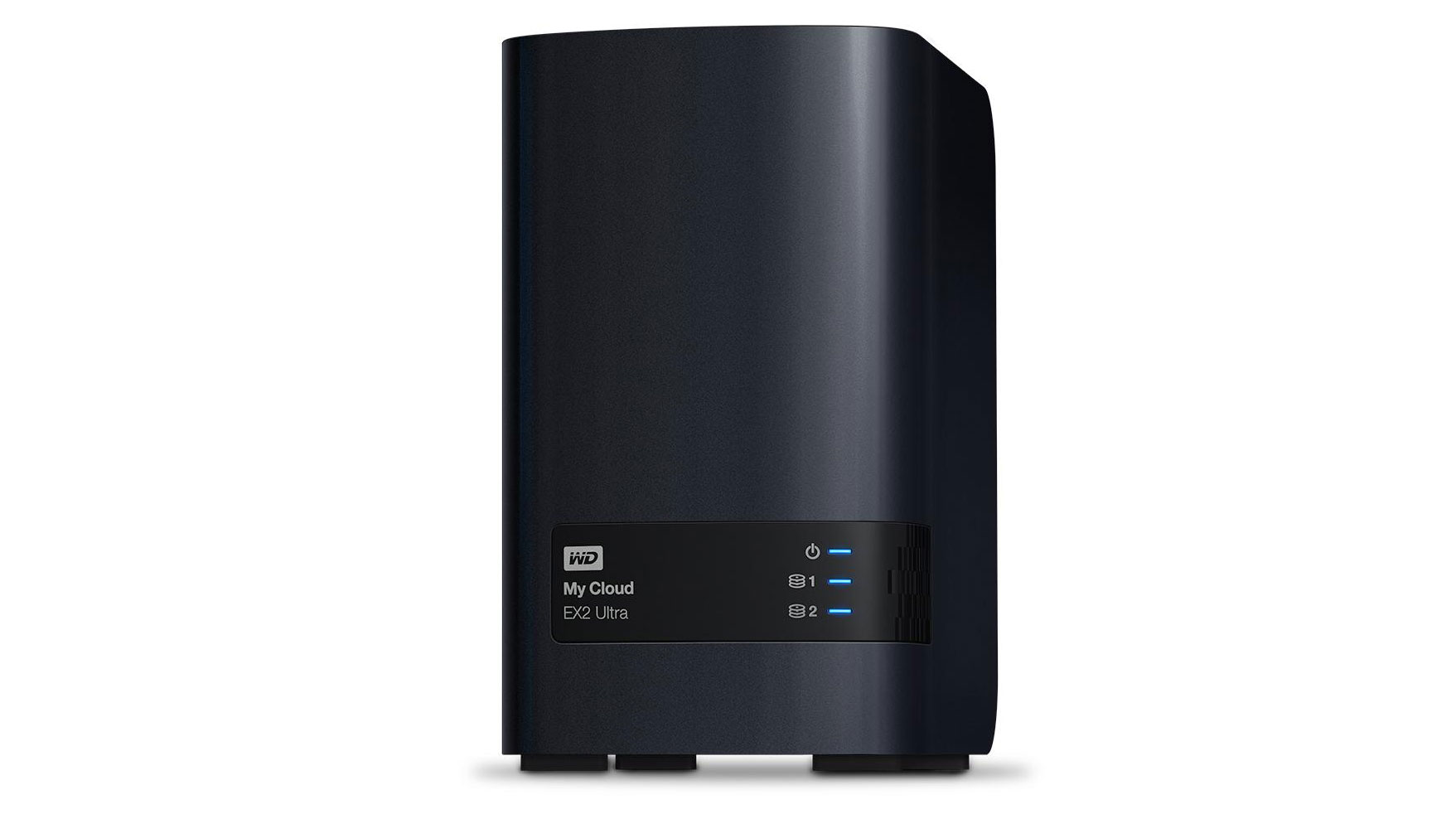
2. WD My Cloud EX2 Ultra NAS drive
Specifications
Reasons to buy
Reasons to avoid
Some NAS drives can be intimidating to newbies, filled with advanced features you'll likely never need. The beauty of WD's My Cloud EX2 Ultra is how easy it is to set up and use, with no unnecessary or confusing initial settings.
To be clear, this a complete NAS unit. In other words, it includes pre-installed hard drives, the operating system, and the hardware itself. It's a self-contained solution for network storage. If you do want to get more techie, it also boasts RAID capabilities. This allows you to configure the two hard disks within to operate in parallel, so two copies of your files are automatically stored, one copy on each disk. That means in the unlikely event of one hard disk failing, the other has a copy of your files.
Accessing and storing files from a remote location is also no problem as the built-in software allows you to use the drive as an FTP server, and the drive can be set to make automatic backups.
Easiest NAS drive to use
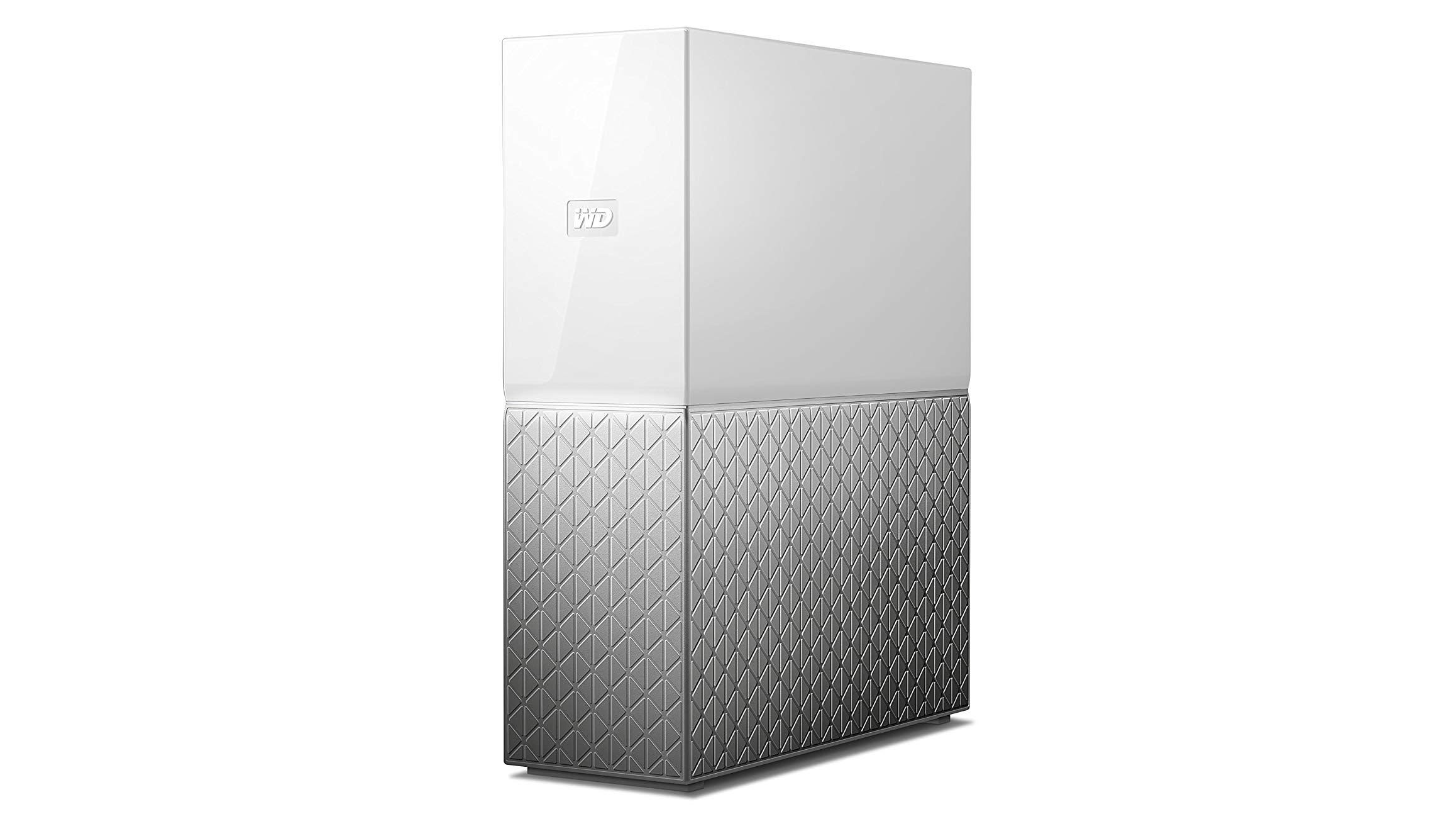
3. WD My Cloud Home
Specifications
Reasons to buy
Reasons to avoid
WD has clearly realized that NAS storage isn't only for geeks and computer tech guys. Because the My Cloud Home is as effortlessly easy to get up and running as you could wish for. Just link it to your home Wi-Fi and you've got a centralized storage drive accessible from computers, laptops and smart devices around your home, or from anywhere with an internet connection.
The drive can be configured so multiple trusted users can have there own private storage space, and you can stream videos from the drive using Google Chromecast, Sonos and Plex. Capacities vary from 2TB to 8TB, and all options are very competitively priced. The single hard drive configuration also results in a slim, space-saving design that'll easily sit on your desk, taking up little more room than a conventional external hard drive.
The only downside with this single-drive solution is there are no RAID features for duplicating files across two hard disks for extra safety in the event of drive failure. But if that's a problem, consider the bulkier dual-drive WD My Cloud Home Duo which also adds 12, 16 and 20GB capacity options.
Best NAS drive for pros
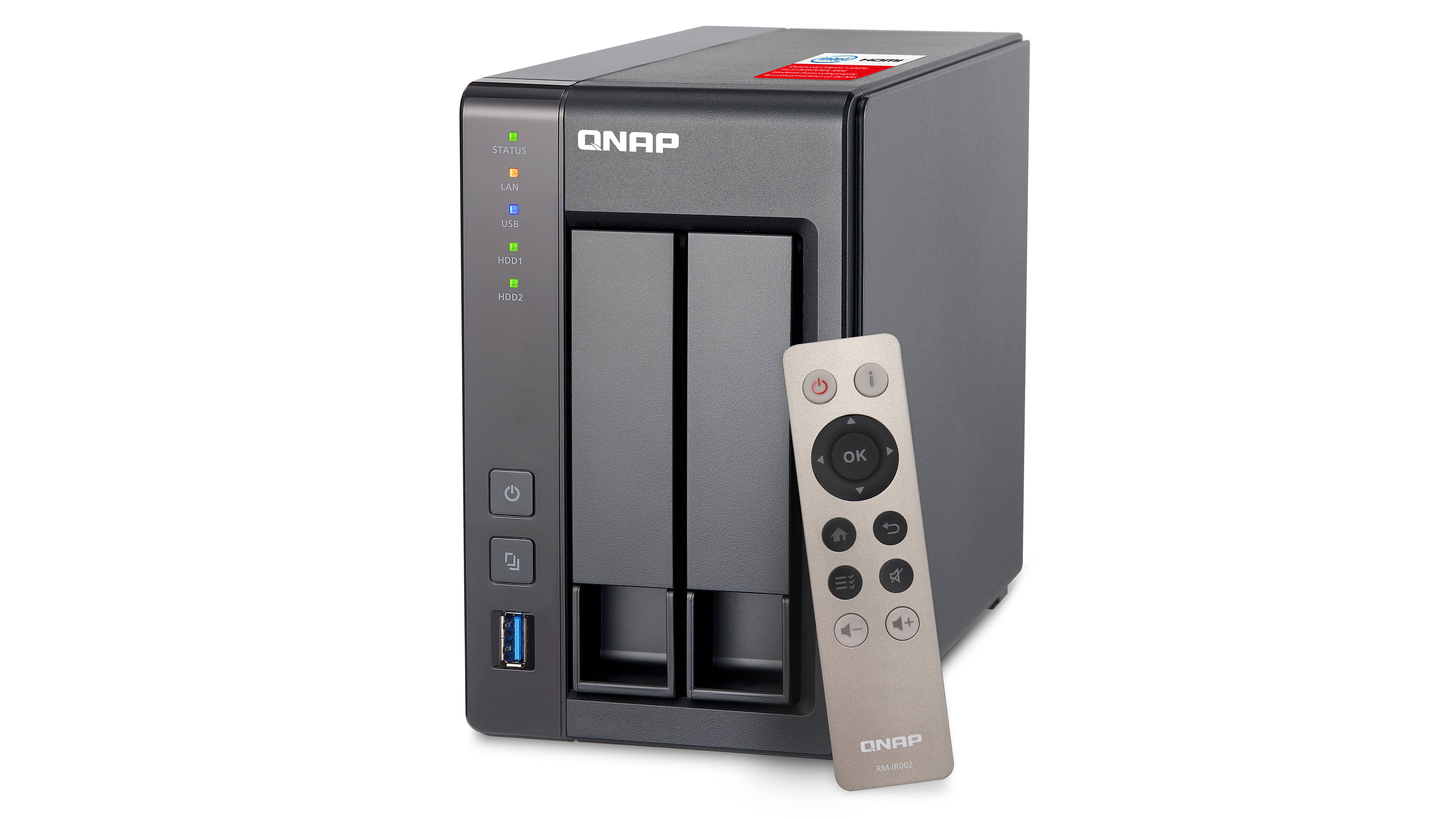
4. QNAP TS-253E NAS drive
Specifications
Reasons to buy
Reasons to avoid
If you’re after a feature-rich NAS storage solution that will do a brilliant job of safely storing your photos and videos, while also allowing you to access and share them online, then the QNAP TS-253E NAS drive is a great investment. It comes with two drive bays to allow you to use dual hard drives in a RAID array of your choice, and there’s loads of apps available to make use of its features.
You can access your photos from the QNAP TS-253E NAS drive on your smartphone using the QPhotos app, and you can easily set it up so that your PC or Mac sees the QNAP TS-253E NAS drive as if it was a hard drive installed in the PC itself – which makes saving and editing your photos direct from this NAS device incredibly easy.
This drive doesn’t come with hard drives installed, however. It’s easy enough to add your own – and means you can pick drives that suit your needs and budget – but you’ll need to factor in the additional cost.
Best NAS drive for compatibility
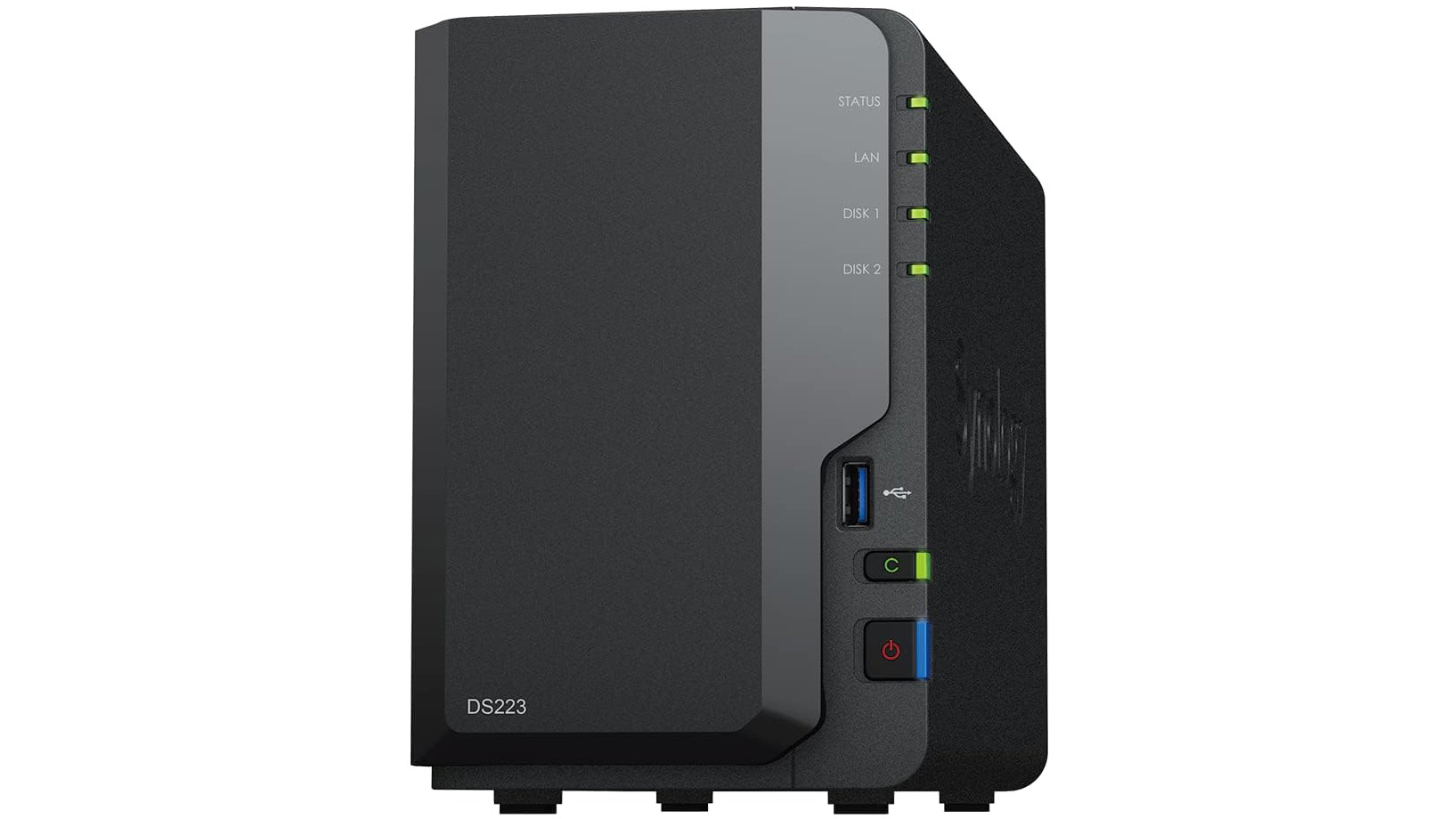
5. Synology DiskStation DS223
Specifications
Reasons to buy
Reasons to avoid
Synology has a reputation for producing top quality, pro-level NAS devices more suited to business use than in the home, but the DiskStation DS223 is a much more accessible option for amateur photographers. It can be accessed from virtually any device (PC, Mac, Chromebook, Android or iOS) and you get fast photo indexing with the option to automatically upload photos and videos you take straight to the DiskStation - it's your own private cloud storage.
Though pricier than some entry-level NAS devices on this list, the DS223 adds value with a generous 2GB of DDR4 RAM, a 1.7GHz quad-core processor, RAID capability and hardware data encryption. Just bear in mind that you'll need to factor in the extra cost of two hard disks to make the DS223 operational.
Best NAS drive for value
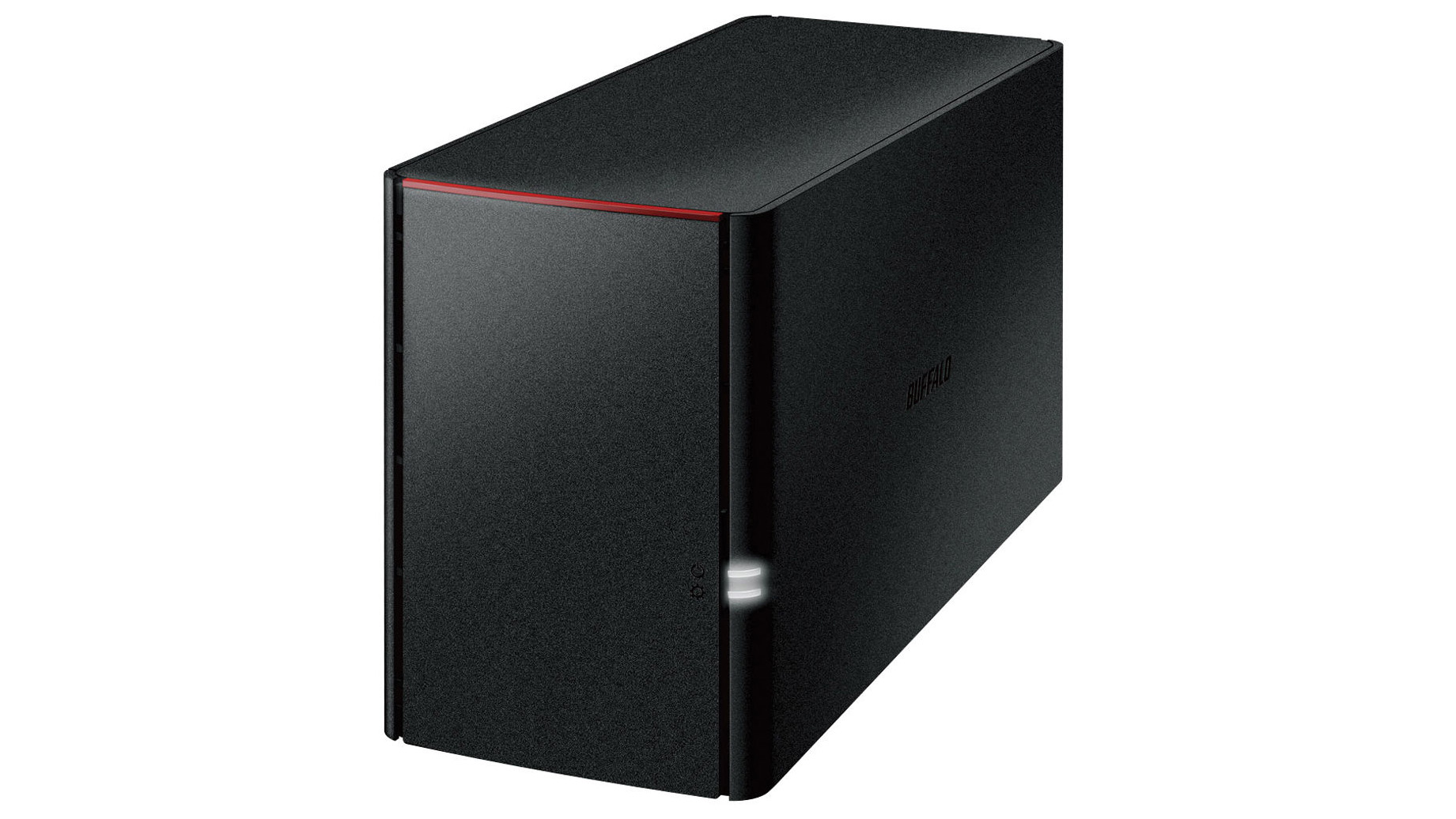
6. Buffalo LinkStation LS220D
Specifications
Reasons to buy
Reasons to avoid
Buffalo's dual-drive LinkStation 220 will cost you little more than a more basic single-drive NAS, but with two drives inside comes options for RAID drive mirroring, giving you extra data security in the unlikely event of hard disk failure. And the features don't stop there. There's easy automatic backup for PCs and Apple Time Machine compatibility, and the drive is DLNA Certified so it can be used as an iTunes media server.
But the standout feature is its built-in BitTorrent client that'll allow you to download and upload without needing to use your computer. 2TB, 4TB, 6TB and 8TB capacities are available, with the 8TB model making the most sense for long-term storage, and it's the best value.
Best NAS drive for storage
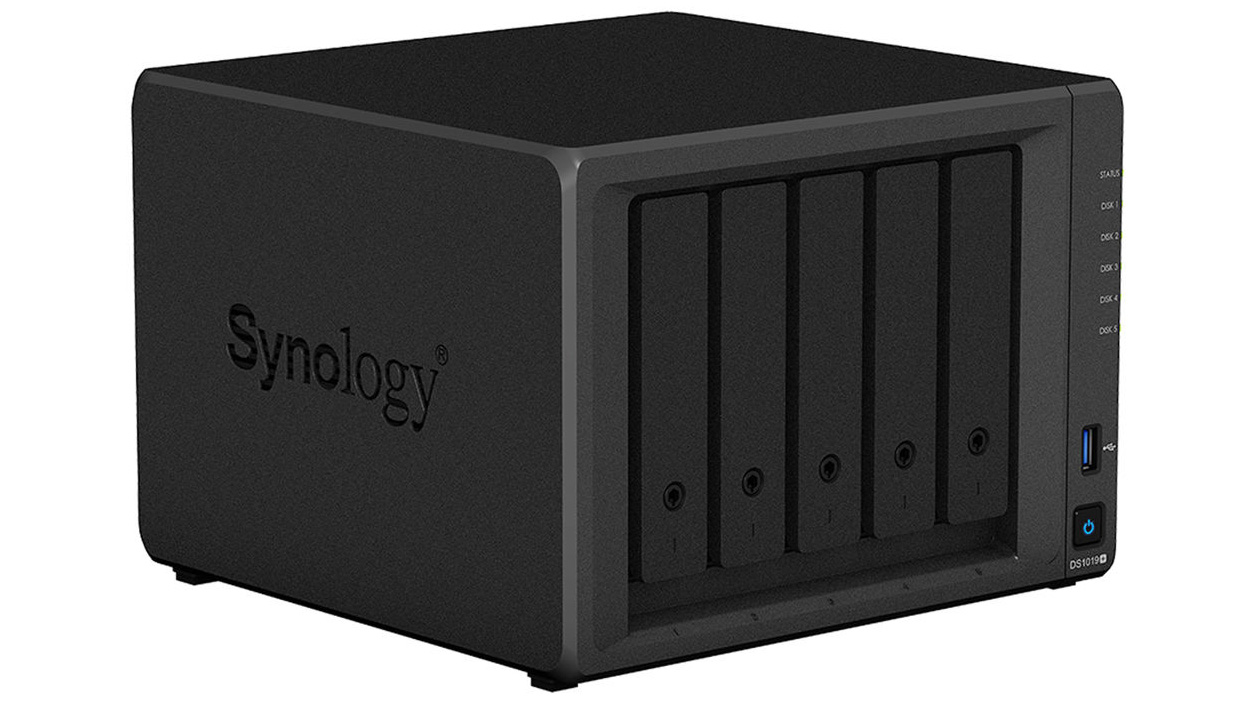
7. Synology DiskStation DS1522+
Specifications
Reasons to buy
Reasons to avoid
If you’re a professional photographer that runs a studio or business and you hold a lot – and we mean a lot – of photographs or videos for clients, then the Synology DiskStation DS1522+ NAS drive is an ideal investment. It’s a powerful – and fast – NAS device that will allow you to store and edit photographs remotely.
It can be expanded with the two DX517 expansion units to accommodate up to 15 drives, so you can grow the Synology DiskStation DS1522+ alongside your business. What's more, there are two dedicated M.2 SSD slots which can be used to boost the responsiveness and application performance of the data center.
Recommended hard disks for NAS drives
Some of the NAS drives above will not come supplied with the actual 3.5in hard drives that you need. We'd recommend using heavy-duty models, designed specifically for NAS use. These are the top two options we'd consider, offering a good combination of robustness and value.
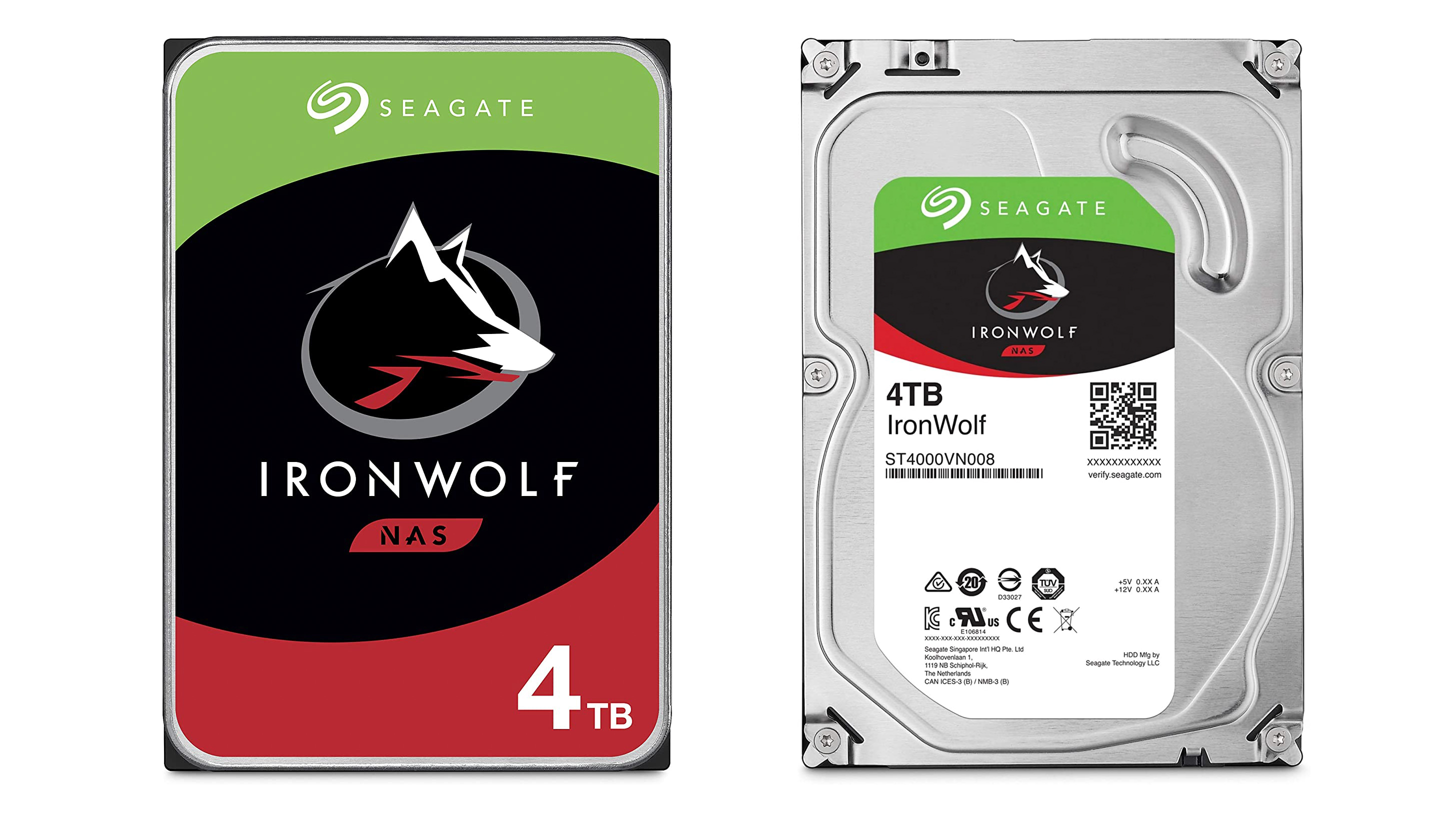
Seagate IronWolf 3.5in NAS hard drive
Reasons to buy
We'll start with our top pick overall. The Seagate IronWolf Pro is a high-end NAS hard disk drive with solid all-around performance, a strong five-year warranty plus three years of data recovery service, and competitive pricing per TB. It uses 7200 RPM spindle speed, 256MB cache, and CMR technology to deliver good transfer rates up to 255 MB/s.
Overall, it competes well against the Western Digital Red Pro below, offering similar performance but with better warranty and data recovery support. This is a good option if you need high capacity drives, with Seagate's software tools providing extra health monitoring and recovery capabilities. Overall, we feel this device offers the best blend of performance, warranty, data recovery services, and pricing per TB available today.
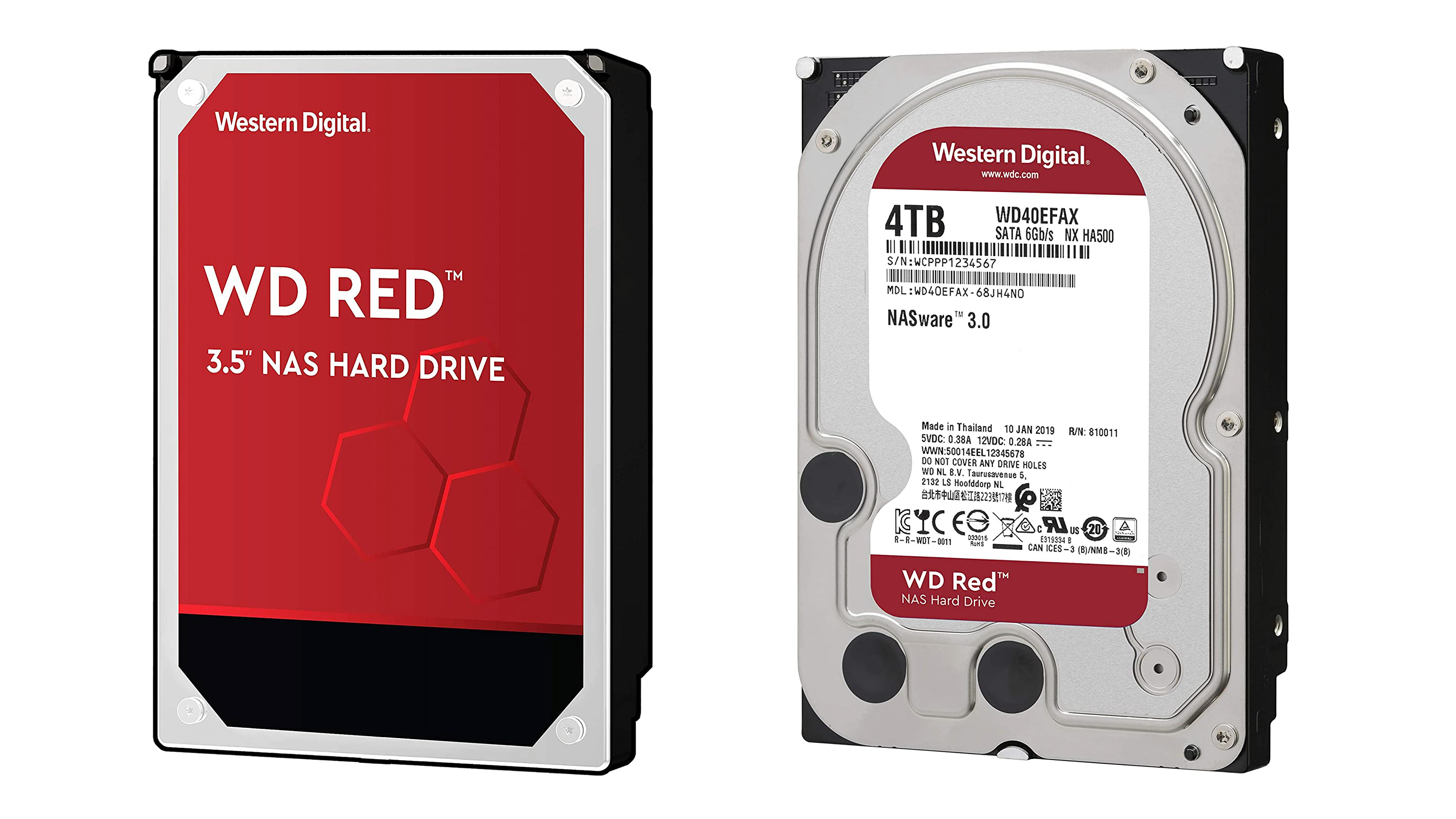
WD RED 3.5in NAS hard drive
Reasons to buy
The WD Red Pro is a worthy alternative to the Seagate IronWolf Pro above. Harnessing WD's OptiNAND technology, it combines mechanical and flash storage to achieve high capacity CMR drives up to 22TB. It boasts nine platters at 2.2TB each, with metadata stored on 64GB of onboard SanDisk 3D NAND flash. This allows higher capacities than conventional drives.
Performance is impressive, meeting standard NAS drive metrics, with a 512MB DRAM cache. The onboard software includes a dashboard utility and Acronis backup, but lacks data recovery services.
Pricing per TB is not quite as good value as the Seagate IronWolf Pro, but still competitive for this high capacity range. And on the plus side, it's cooler and quieter in use than the former, so if you hate being distracted by background noise, this is the better pick.
FAQs
What is a NAS drive?
A NAS drive, short for Network-Attached Storage, is basically a big box of hard drives that connects to your network and allows you to store and access your data from multiple devices on your network.
Why use a NAS drive?
With cloud storage becoming ever cheaper and more capacious, you may be wondering why you'd choose NAS drive over online file storage. Well, NAS can be more cost-effective over the long term, especially if you need more than 2TB of storage. Then there's the issue of uploading large files to cloud storage, which can be tediously slow on some ADSL internet connections. And of course, with a NAS drive, there are no monthly cloud storage fees to worry about.
Are NAS drives secure?
Yes. Of course security is paramount with such an accessible device, so you'll need your own login details in order to access the drive remotely, but these credentials can be given to trusted friends and family members if you want to share certain photos and videos.
How to choose the best NAS drive
Choosing the right NAS drive depends on your needs. Consider storage space: how much data do you need now, and will you need more in the future? For multiple users or frequent file access, prioritize speed with faster processors and multiple ethernet ports. RAID protects against drive failure, but adds complexity. For backups, focus on capacity and reliability. Look for NAS drives compatible with NAS-designed hard drives for better performance and lifespan. Finally, choose features like media streaming or app support based on what you'll use the NAS drive for.
How we test the best NAS drives
To find the top NAS drives, we follow a multi-step process. First, we set up the NAS with industry-standard hard drives in RAID configurations. Then, we connect it to a test server using ethernet to assess raw performance with benchmark tools. Real-world speed is measured by copying large files and folders to and from the NAS, testing both regular and encrypted transfers. Finally, we evaluate features such as media streaming, app support, and ease of use.
Read more:
The best photo-editing laptops
The best budget laptops
The best portable SSDs
The best desktop computers for photo editing
The best recovery software for photos
The best monitors for photographers
The 50 best camera accessories
The best photo-editing software
The best drawing tablets for photo editing
Get the Digital Camera World Newsletter
The best camera deals, reviews, product advice, and unmissable photography news, direct to your inbox!
Ben is the Imaging Labs manager, responsible for all the testing on Digital Camera World and across the entire photography portfolio at Future. Whether he's in the lab testing the sharpness of new lenses, the resolution of the latest image sensors, the zoom range of monster bridge cameras or even the latest camera phones, Ben is our go-to guy for technical insight. He's also the team's man-at-arms when it comes to camera bags, filters, memory cards, and all manner of camera accessories – his lab is a bit like the Batcave of photography! With years of experience trialling and testing kit, he's a human encyclopedia of benchmarks when it comes to recommending the best buys.

